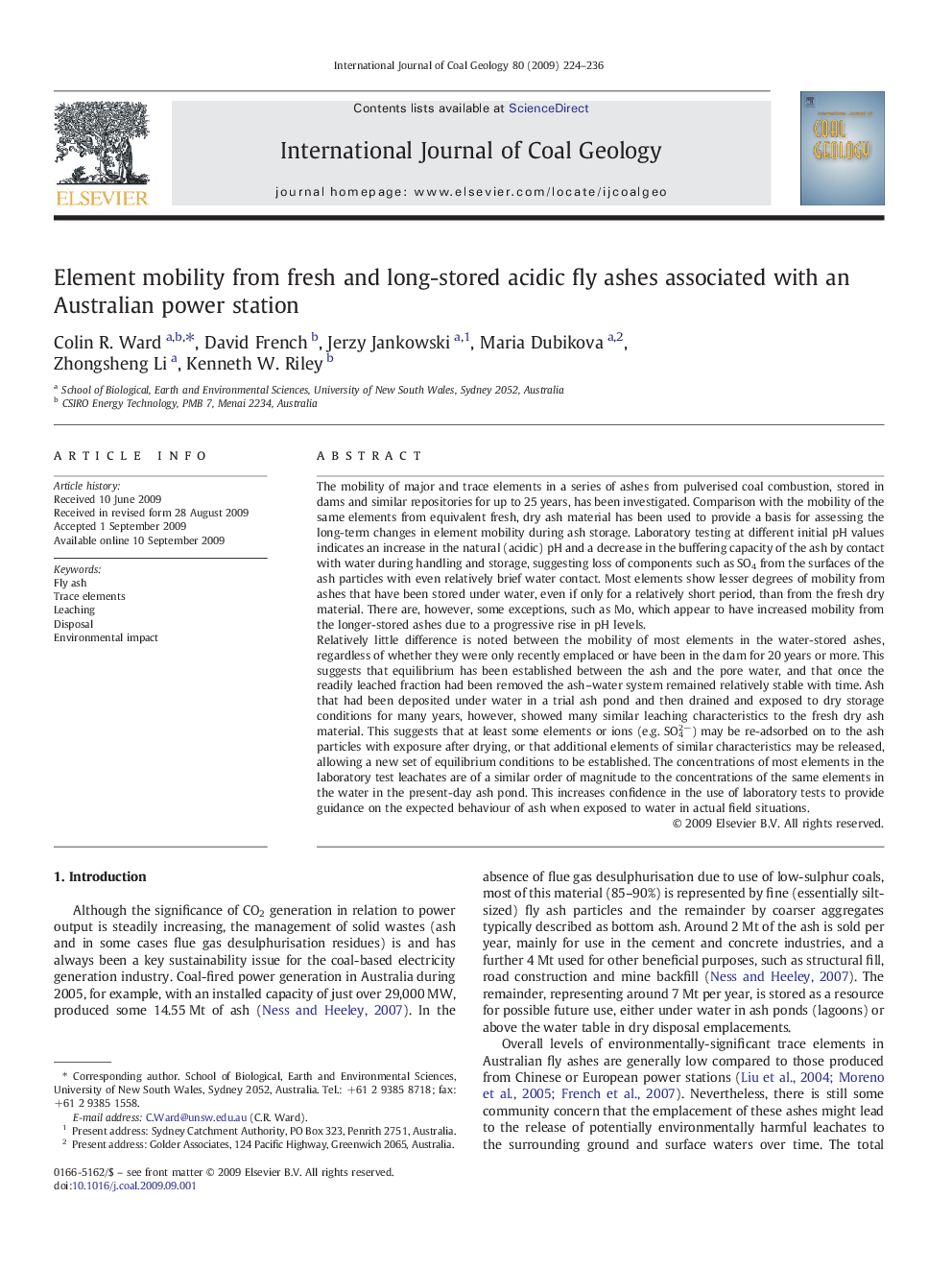| Article ID | Journal | Published Year | Pages | File Type |
|---|---|---|---|---|
| 1753824 | International Journal of Coal Geology | 2009 | 13 Pages |
The mobility of major and trace elements in a series of ashes from pulverised coal combustion, stored in dams and similar repositories for up to 25 years, has been investigated. Comparison with the mobility of the same elements from equivalent fresh, dry ash material has been used to provide a basis for assessing the long-term changes in element mobility during ash storage. Laboratory testing at different initial pH values indicates an increase in the natural (acidic) pH and a decrease in the buffering capacity of the ash by contact with water during handling and storage, suggesting loss of components such as SO4 from the surfaces of the ash particles with even relatively brief water contact. Most elements show lesser degrees of mobility from ashes that have been stored under water, even if only for a relatively short period, than from the fresh dry material. There are, however, some exceptions, such as Mo, which appear to have increased mobility from the longer-stored ashes due to a progressive rise in pH levels.Relatively little difference is noted between the mobility of most elements in the water-stored ashes, regardless of whether they were only recently emplaced or have been in the dam for 20 years or more. This suggests that equilibrium has been established between the ash and the pore water, and that once the readily leached fraction had been removed the ash–water system remained relatively stable with time. Ash that had been deposited under water in a trial ash pond and then drained and exposed to dry storage conditions for many years, however, showed many similar leaching characteristics to the fresh dry ash material. This suggests that at least some elements or ions (e.g. SO42−) may be re-adsorbed on to the ash particles with exposure after drying, or that additional elements of similar characteristics may be released, allowing a new set of equilibrium conditions to be established. The concentrations of most elements in the laboratory test leachates are of a similar order of magnitude to the concentrations of the same elements in the water in the present-day ash pond. This increases confidence in the use of laboratory tests to provide guidance on the expected behaviour of ash when exposed to water in actual field situations.
